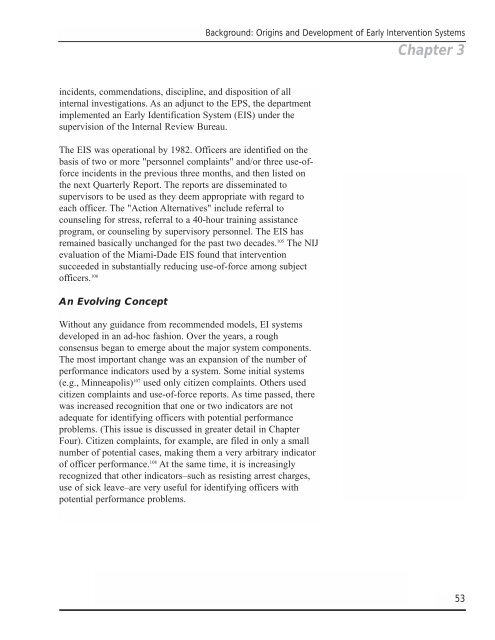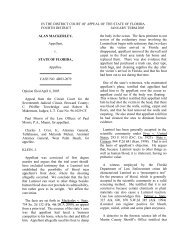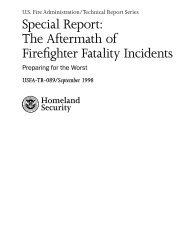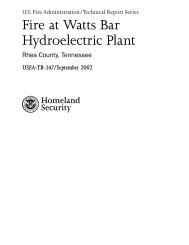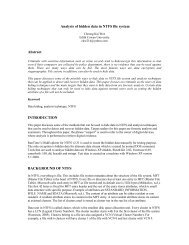Early Intervention Systems for Law Enforcement Agencies - Cops ...
Early Intervention Systems for Law Enforcement Agencies - Cops ...
Early Intervention Systems for Law Enforcement Agencies - Cops ...
Create successful ePaper yourself
Turn your PDF publications into a flip-book with our unique Google optimized e-Paper software.
Background: Origins and Development of <strong>Early</strong> <strong>Intervention</strong> <strong>Systems</strong><br />
Chapter 3<br />
incidents, commendations, discipline, and disposition of all<br />
internal investigations. As an adjunct to the EPS, the department<br />
implemented an <strong>Early</strong> Identification System (EIS) under the<br />
supervision of the Internal Review Bureau.<br />
The EIS was operational by 1982. Officers are identified on the<br />
basis of two or more "personnel complaints" and/or three use-of<strong>for</strong>ce<br />
incidents in the previous three months, and then listed on<br />
the next Quarterly Report. The reports are disseminated to<br />
supervisors to be used as they deem appropriate with regard to<br />
each officer. The "Action Alternatives" include referral to<br />
counseling <strong>for</strong> stress, referral to a 40-hour training assistance<br />
program, or counseling by supervisory personnel. The EIS has<br />
remained basically unchanged <strong>for</strong> the past two decades. 105 The NIJ<br />
evaluation of the Miami-Dade EIS found that intervention<br />
succeeded in substantially reducing use-of-<strong>for</strong>ce among subject<br />
officers. 106<br />
An Evolving Concept<br />
Without any guidance from recommended models, EI systems<br />
developed in an ad-hoc fashion. Over the years, a rough<br />
consensus began to emerge about the major system components.<br />
The most important change was an expansion of the number of<br />
per<strong>for</strong>mance indicators used by a system. Some initial systems<br />
(e.g., Minneapolis) 107 used only citizen complaints. Others used<br />
citizen complaints and use-of-<strong>for</strong>ce reports. As time passed, there<br />
was increased recognition that one or two indicators are not<br />
adequate <strong>for</strong> identifying officers with potential per<strong>for</strong>mance<br />
problems. (This issue is discussed in greater detail in Chapter<br />
Four). Citizen complaints, <strong>for</strong> example, are filed in only a small<br />
number of potential cases, making them a very arbitrary indicator<br />
of officer per<strong>for</strong>mance. 108 At the same time, it is increasingly<br />
recognized that other indicators–such as resisting arrest charges,<br />
use of sick leave–are very useful <strong>for</strong> identifying officers with<br />
potential per<strong>for</strong>mance problems.<br />
53


